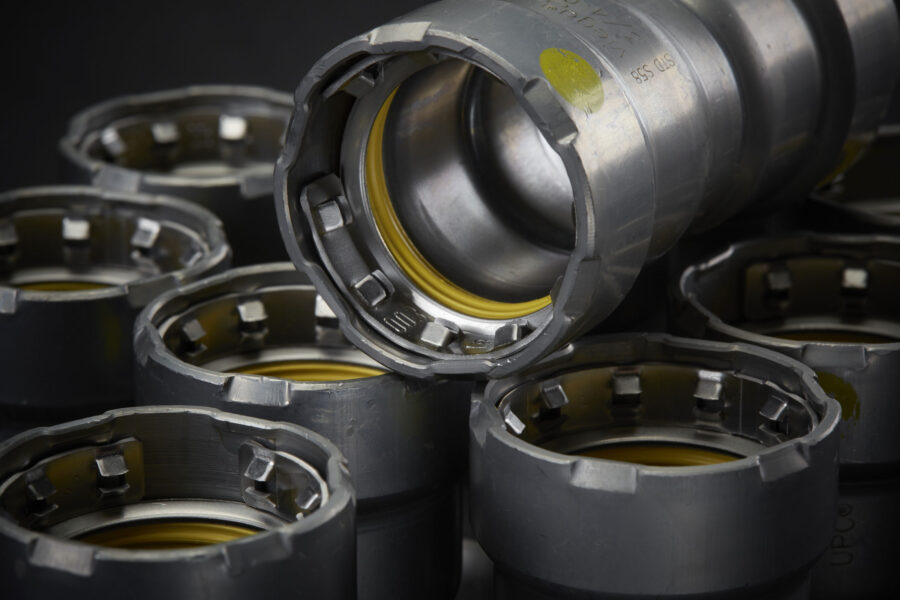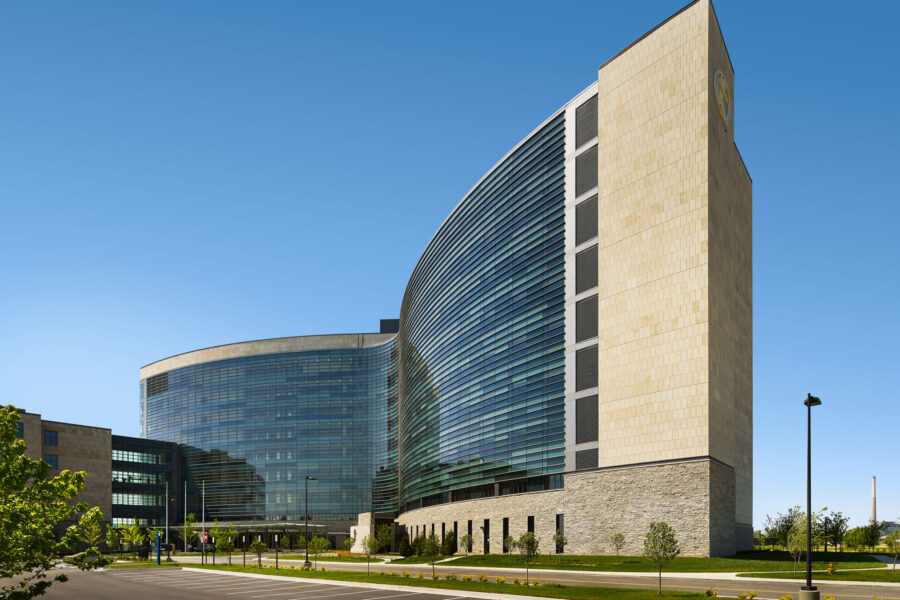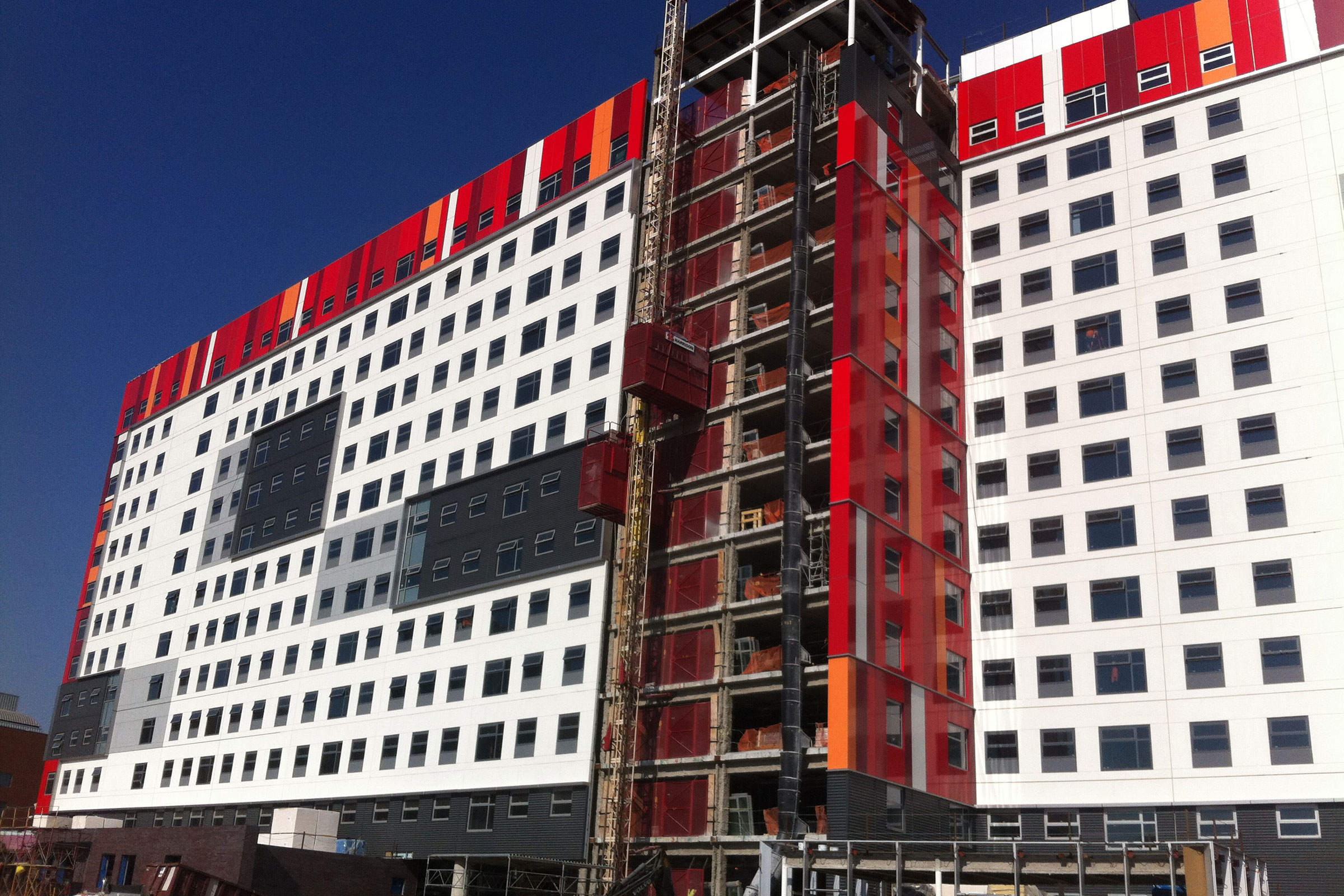Story at a glance:
- Fortifying an existing building against earthquakes, ground motions, or soil collapse is possible with seismic retrofits.
- Typical costs for seismic retrofits run from $3,000 to $10,000 but could be higher.
- Expansion joints and EIFS are two common ways to retrofit structures for protection against earthquakes and other types of ground movements.
An earthquake is a builder’s worst nightmare. Fortunately it’s possible to fortify structures after their construction is completed with a seismic retrofit.
Let’s look at some ideas and examples that may help projects withstand moderate to severe earthquakes and similar ground movements.
What is a Seismic Retrofit?
Modifications to existing structures that prevent their collapse or shifting due to earthquakes, ground movements, sonic booms, subsidence (soil sinking), and related phenomena are known as seismic retrofits.
A retrofit braces and reinforces a building by strengthening its load-bearing parts and ensuring their attachment to the foundation is unshakeable. A seismically retrofitted building is able to resist earthquake forces better and therefore has a lower risk of damage.
When Does a Building Need a Seismic Retrofit?

The Bayshore School in Daly City, California is a new 50,000-square-foot campus that was realized as a result of evaluating the cost-benefit analysis of renovating versus replacing existing school facilities. Studio W Architects also helped in capturing funding streams to support the cost of new construction. Photo courtesy of Studio W Architects
There are several instances where a seismic retrofit may be needed. Here are several reasons seismic retrofits could be right for your project.
1. Structure is in Seismic Zone 3 or 4 (for California residents) or Seismic Design Category D, E, or F. If you’ve built an unreinforced structure in an area prone to earthquakes, like close to a natural fault line, you should install seismic retrofits to prevent possible damage. Most of California falls in this category.
Unfortunately even the best geological modeling cannot always predict where an earthquake’s effects will be felt. According to the US Geological Survey, an earthquake’s numerical magnitude is not a reliable way to know if your building will be damaged. A number of variables can have an influence—including the distance from the earthquake’s epicenter, the type of soil your building rests on, and the building’s inherent sturdiness.
Generally building damage occurs at or above 4 on the Richter scale. If the area close to your building’s location experienced an earthquake of this magnitude or higher in the recent past, it’s a good idea to install the appropriate seismic retrofits as soon as possible.
2. Building was constructed before 2000. Stricter building codes and regulations passed in the 1990s required that new builds be able to resist the force of an earthquake. Homes built prior to 2000 are more vulnerable to earthquake damage.
3. Structure built on a raised foundation. Is there a crawl space beneath the first floor of your building instead of a basement? Then it’s likely built on a raised foundation instead of a concrete slab. In other words, there is a system of posts, beams, and cripple walls (short, wood-framed walls located on the perimeter of the building) undergirding it.
4. Situated on a hill. Hillside buildings usually have posts and cripple walls beneath them of variable heights to keep the first floors level. With no sturdy connections between each floor (even when the basement and attic are both crawl spaces), failures are often more severe.
5. Living space above a garage. Habitable rooms on top of a garage add weight that must be supported from below. The garage, framed by narrow walls with one side being a large door opening, is not built to sustain external forces when carrying that additional weight. This arrangement makes a structure extremely vulnerable to earthquakes. The lateral forces could easily make the garage break away from the rest of the structure.
Other Ground Movements
Besides earthquakes the ground could move for several other reasons, thereby putting a building at risk of collapse:
1. Hydraulic fracturing (fracking) has been associated with earthquakes in places that have not historically experienced them, like Oklahoma and Pennsylvania. Research the area where your structure is located to determine if there is fracking occuring or planned to occur.
2. Drought-prone areas or extreme (prolonged) drought are recording instances where land is fracturing. Currently the entire western half of the US is affected.
3. Subsidence (land sinking) may cause your structure to shift or collapse. Over-pumping of groundwater in heavily agricultural regions is one reason for subsidence. Recent studies have documented cases of subsidence scattered all along the East Coast of the US due to sea level rise.
The takeaway from all of these observations is that seismic retrofitting is advised for most regions in the US to ensure structural stability. Several of these phenomena are caused by the climate crisis and expected to worsen in coming decades.
Benefits of Seismic Retrofit

The dynamic movement insulated moisture barrier is mounted behind any expansion cover within the throat of the joint to address moisture and interior R-values. Rendering courtesy of Inpro
In most cases even the most basic seismic retrofits will reinforce the stability of buildings. Here are some benefits of seismic retrofits:
Build trust. As a builder you’ll solidify the trust clients have already placed in you when you recommend seismic retrofits to protect their real property investment.
Improve the odds. You’ll raise the likelihood that retrofitted buildings will survive the next earthquake challenge and with less property damage and loss of life.
Lower a property owner’s earthquake insurance premium and deductible. Since insurance rates are rising rapidly all over the US, retrofits are a way to keep this necessary expense affordable.
Enhance the resale value of a building by retrofitting it to withstand external forces.
How Do Seismic Retrofits Protect Buildings?
Seismic retrofits protect buildings from earthquakes by creating or reinforcing a continuous load path throughout the entire building from roof to the foundation. In this manner seismic retrofits strengthen the entire structure through floor-to-floor connections, helping it to resist both lateral and uplift forces exerted on a building when the ground below it moves.
Lateral (shear) forces act in a horizontal direction that result in back and forth (side to side) movement, also known as racking. Shear forces shake the building, thereby weakening its frame and causing it to slide off the foundation.
Uplift forces, on the other hand, are vertical forces that result in up and down movement. Uplift forces cause the structure to overturn, literally lifting it right off the foundation.
Retrofitted connections redistribute the earthquake’s external forces by transferring them from the frame of the house to the foundation. Contractors create these connections through wood framing, metal connectors that are nailed or screwed into place, or shear walls.
Seismic Retrofitting Strategies

MegaPressG fittings. Photo courtesy of Viega
Seismic retrofitting strategies are ways to anchor a building to its foundation. In some cases they reinforce existing walls. Let’s consider a few types of homes, the seismic retrofit best suited to them, and the cost, according to the California Residential Mitigation Program.
Type of home: Raised foundation homes with or without a crawl space.
Seismic retrofit: Anchoring a home to the foundation with foundation anchor bolts or foundation plates
Cost: $3,000 to $7,000
Type of home: Post and pier homes with a crawl space
Seismic retrofit: Creating a new continuous perimeter foundation; anchoring a home to the foundation with foundation anchor bolts or foundation plates
Cost: $10,000 to $15,000
Type of home: Living space over a garage (soft story)
Seismic retrofit: Bracing the garage’s walls; reinforce the garage door with plywood sheathing or steel panels or possibly a full steel frame; back wall may require a new foundation with reinforcing bars; side walls may need to be reinforced with new anchor bolts and plywood
Cost: $15,000 to $25,000
Type of home: Hillside home
Seismic retrofit: May require updating the foundation; bracing and anchoring framed crawl space walls to the foundation; installing brace wall sheathing
Cost: $10,000+
FEMA offers more information on retrofits as well as a document on seismic retrofitting techniques.
Products to Consider for a Seismic Retrofit

The HGA-designed Owensboro Health Medical Center utilized Inpro solutions. Photo courtesy of Inpro
Builders and designers have plenty of options beyond the standard equipment and products already discussed in this article for seismic retrofitting. Let’s look at a few of them.
Expansion Joints
Expansion joints allow multidimensional movement of a building in storms and earthquakes. Inpro designs expansion joint systems to fit a structure’s unique requirements. Their latest, the 650 Series, is a complete building envelope solution to address complex expansion joint challenges.
“These are designed to survive a seismic event,” says Matthew Fisher, senior product design manager at Inpro’s Engineered Metal Division. He says the 650 Series is an industry first. “Most earthquakes last about 45 seconds. Buildings are moving and swaying violently in that time. This system is designed to survive all of that swaying without getting damaged, so the expansion joints can be reused,” Fisher told gb&d.
Tremco is another leader in expansion joint technology. Their pre-compressed foam expansion joints help fend off future building envelope failures, like those due to seismic events. “A pre-compressed foam is constantly pressing outward on the walls of the joint, so it’s always in compression,” Steve Pierson, Tremco CPG building envelope connections category manager, previously told gb&d. “There’s never tension in the system. In layman’s terms pre-compressed foam is a little bit gentler on the joints, so there is much less likelihood of a joint failure that would allow air or moisture to penetrate the wall cavity, causing mold growth or structural damage.”
He says some substrates, like stucco or exterior insulation and finish systems, benefit from a highly compliant joint filler. “That’s where pre-compressed foam, which puts less stress on sidewalls of the opening, is a huge advantage.”
EIFS
EIFS, an acronym for external insulation finishing system, is non-structural building cladding used to protect and insulate exterior walls. EIFS is not prone to tearing in a seismic event, so designers and builders can employ it with confidence on seismically retrofitted builds.
MegaPress Pipe Fittings by Viega
If your structure is in an earthquake zone and you wish to fortify it, all building materials down to the pipe fittings need to sustain the impacts.
To test their products, Viega built a shake table to simulate an earthquake scenario, starting with a 5, then a 7 on the Richter scale. Finally, they ran a 9.2 level earthquake test twice.
“It was really important in California that we pass the seismic rating,” Viega technical training consultant Colton Henkowski says. “We passed with flying colors—absolutely no leaks and everything held up through all the different situations.”



